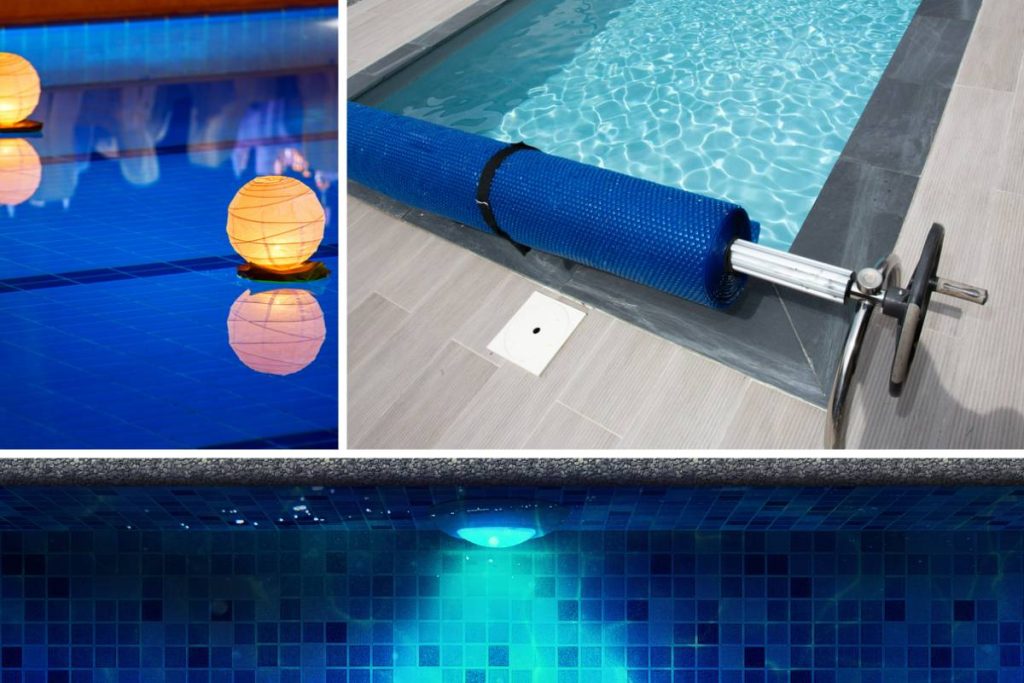Swimming pools have always been entertaining, but in our indulgence, we seem to forget the environmental impact of pools. Most pools are maintained with harsh chemicals. To make a swimming pool eco-friendly, we must consider different ways to heat and maintain the pool.
Before going on with the eco-friendly swimming pool options, you should know what an eco-friendly swimming pool is and its major benefits.
What Is an Eco-friendly Swimming Pool?
An eco-friendly pool is a body of water or facility that uses ecologically safe treatments. They are gaining popularity among pool owners now. These eco-friendly pools come in varieties.
Types of Eco-friendly Pools
High-tech Pools
These swimming pools are maintained with high-technology water treatment that has just a little environmental impact on the surroundings. High-tech water treatments include salt chlorination, ozone, active oxygen, and UV radiation. Salt chlorination entails using dissolved salt to chlorinate a swimming pool. This process doesn’t require you to store strong chemicals and doesn’t result in toxic by-products. UV radiation exposes the pool water to ultraviolet light,t which is lethal to microorganisms such as bacteria. Active oxygenation entails placing a soluble substance that produces oxygen when dissolved in the pool water. Ozone treatment neutralizes microorganisms and decreases chemical levels without resulting in by-products.
Natural or Bio Pools
These pools are created to simulate the local ecosystem of natural pools and have no environmental impact. Unlike high-tech pools, they don’t require high-tech to be maintained. Bodies of water constructed to model natural swimming pools are treated with aquatic plants or biological water filters, preserving biodiversity in the water and surroundings. This puts the pool in sync with nature and reduces water consumption.
Now, let’s see why we should make our pools environmentally friendly.
Benefits of Natural Pools
- Anyone can swim in eco-friendly pools because the water doesn’t irritate the eye, skin, and mucosa membranes. It doesn’t matter if you have skin issues or your skin is naturally sensitive; you can swim in eco-friendly pools.
- These pools have little to no environmental impact and use 35% less water to cleanse the filter. This means the treatment equipment consumes much less energy than pools using strong chemicals.
- An eco-friendly or natural pool is a viable means of saving money because it requires less maintenance. You don’t have to balance the pH of the water, use chemical filtration, or other environmentally impactful ways of keeping the pool clean.
- A natural swimming pool has more visual appeal than traditional pools. You can even add a natural stone to give it that eco-friendly look.
5 Ways to Make Any Swimming Pool More Eco-friendly

This includes ways to make your pool more eco-friendly:
#1. – Solar Pool Heater
Whether during the winter or in temperate regions, the pool water will naturally decrease in temperature. The water can become too cold for the human body,y and to make the water comfortable enough, pool owners will use a piece of heating equipment to keep the water warm. In many cases, the choice of heating equipment could be either gas or electric heaters.
However, to make your pool more eco-friendly, take advantage of the ultimate natural resource – the sun. To do this, you should install a solar pool heater to keep the backyard swimming pool warm. This piece of solar equipment uses the sun’s energy to function.
Pros
Easy to Install
Unlike a gas or electric heater, the solar pool heater is much easier to install. You just need to hire an installer to set up the solar panels on your roof and connect the heater to the pool’s plumbing system.
Durable
As is typical with products of solar technology, the solar heater lasts longer than electric or gas heaters. The reason is that they don’t rust or corrode like other heaters. This piece of equipment can last for 15-20 years. An added benefit is that they can function in different regions, whether Southern California, Florida, New York, etc.
Low Maintenance
Unlike other pieces of equipment, this pool heater doesn’t require regular maintenance. There’s no need to service the parts, change the oil, or make certain repairs. This is a major appeal of the pool heater.
Zero Carbon Footprint
The pool heater doesn’t release greenhouse gas emissions, so it does not impact the environment.
Doesn’t Increase Utility Bills
Unlike electric heating equipment, a solar heater doesn’t depend on a mains electricity supply to function. This piece of equipment sources its own power from the sun.
Cost-effective
Though the initial price is expensive, the solar heater pays for itself within five years of being installed in the pool area. This is because you’ll save money on operating and maintenance costs.
Cons
Initial Cost
The installation fee is high; many pool owners may struggle to pay upfront. However, the bright side is that you’ll only spend on the purchase and installation. A fair bargain.
#2. – Pool Cover
This is a cost-effective and eco-friendly way to maintain your pool. The alternative is leaving your pool exposed and resorting to the use of chlorine and other harsh chemicals to clean the pool, which can result in the growth of harmful algae spores. There are several reasons to use a pool cover.
Firstly, by keeping your pool covered, you’ll save water. When you expose the water to the heat outside, some will evaporate into the atmosphere. The hotter the temperature outside, the faster the water evaporates.
Secondly, you’ll protect the water from twigs, leaves, and other debris. This is very common in areas with rich vegetation. Using a cover for your natural pool saves you the stress of removing debris. Why remove debris when you prevent it from entering your pool in the first place?
Pros
- Reduces your usage of the heating equipment because it will trap the heat in the water and keep it warm at night.
- The pool cover technology reduces the amount of chlorine you’ll need to add to the pool.
- Ensures the pool stays clean.
Cons
- It can be a hassle, especially if it’s a manual cover and you must use it daily.
- It dents the visual appeal of swimming pools in the home.
- The manual cover requires storage when not in use.
- The automatic cover requires a large space.
#3. – LED Lighting in Your Pool
Energy efficiency is one of the hallmarks of environmental sustainability. Conventional pool lighting is very expensive and consumes more energy which means an increased electricity bill. The solution is to revamp your pool’s illumination using LED light bulbs.
Pros
- Smart LED lights are easy to use because you can control them remotely via an app on your phone.
- LED lights consume less energy and reduce your electricity bill.
- This lighting is visually appealing and suitable for pool parties.
Cons
- LED light bulbs are more expensive than conventional light, such as incandescent light bulbs.
#4. – Salt Water Generator
This is one of the most reliable and eco-friendly ways to clean your swimming pool. This salt chlorination process utilizes highly pure salt and water to form chlorine bubbles. This piece of equipment removes the need to increase chlorine levels in your water by adding more chlorine to the pool. Furthermore, a saltwater pool is more skin-friendly and has no pungent smell of chlorine. Saltwater pools also have clearer and silkier waters.
Pros
- The water smells better.
- Using a salt water generator makes the pool suitable for asthmatic people.
- The saltwater generator is very durable and requires minimal maintenance.
- It enhances the quality of the water.
- It makes you less dependent on chlorine to sanitize the water.
Cons
- Setting up a salt water generator costs more than simply adding chlorine to the water.
#5. – Energy-efficient Pumps
This is a good way to save money by using less energy. Conventional water pumps are also referred to as single-speed pumps. On the flip side, energy-efficient pumps are variable-speed pumps. The latter reduces your utility bills by as much as 80% yearly. It’s eco-friendly because you reduce the pump’s speed to filter your pool, and in this mode, the pump will emit less noise and consume less electricity.
Pros
- These pumps cause less wear and tear for the pipes. This is because, at varying pump speeds, there’s less stress on the pipes thanks to the variation in water pressure.
- It executes water filtration at lower speeds, an extra function to provide water for the pool.
- They are less noisy.
- Energy-efficient pumps reduce the quantity of chemicals needed in the pool by distributing them more efficiently and evenly.
Cons
- They are more expensive than single-speed pumps but incur less operating and maintenance costs in the long run.
- They last longer than single-speed pumps.

